 Top/Our Research
Top/Our Research
 Top/Our Research
Top/Our Research
LED are solid state semiconductors lights, working under current injection. The light is stable with temperature and emits little heat, unlike incandescent light bulbs.
In 2014, the Physics Nobel prize was awarded to Isamu Akasaki, Hiroshi Amano and Shuji Nakamura °»for the invention of efficient blue light-emitting diodes which has enabled bright and energy-saving white light sources".
Both blue and green LEDs can be achieved with GaN, but commercialized red LED is, for now, based on Gallium Arsenide (GaAs). This has the disadvantage of being a pollutant and of inhibiting the fabrication of a single pixel white LED (blue, green and red based on the same semiconductor).
In our laboratory, we work on GaN based red LED, using rare earth Europium (Eu) doping. Grown with organometallic vapor phase epitaxy (OMVPE), using different Eu sources and growing conditions, we fabricated a GaN:Eu red LED. Further studies are necessary to improve the light output per input power, and some research is still needed on the GaN:Eu film characteristics using Xray Diffraction for crystal quality, Atomic Force Microscopy (AFM) to assess the surface roughness, Transmission Electron Microscopy (TEM) to understand tension introduced by the large Eu atom, Photoluminescence spectroscopy to analyse light emission processes ...
Another lead is the fabrication of a blue LED with an emission wavelength further from the human eye sensitivity, which interfere with the circadian rythm. The LED researched is based on a AlGaN host with rare earth Thulium (Tm) as a dopant.
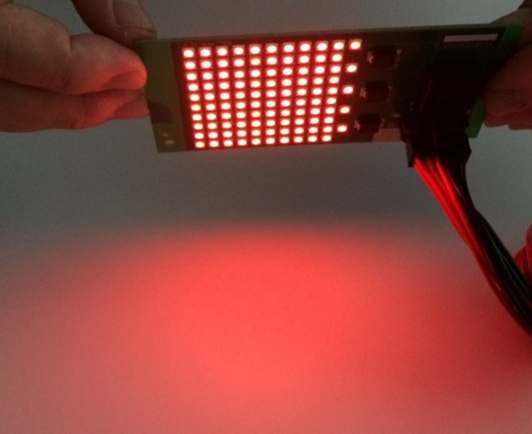
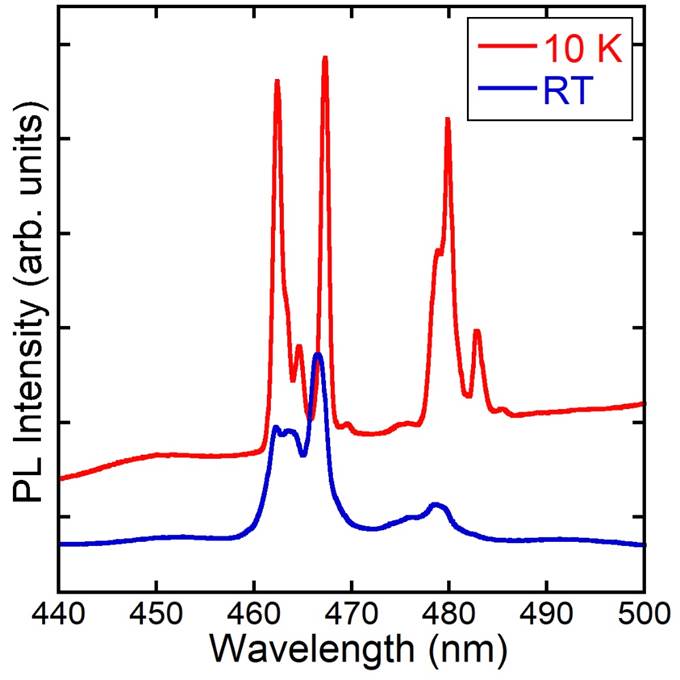
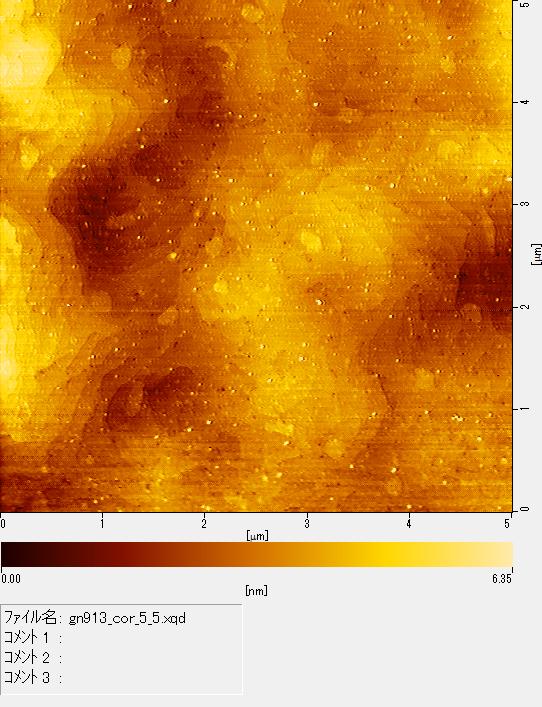
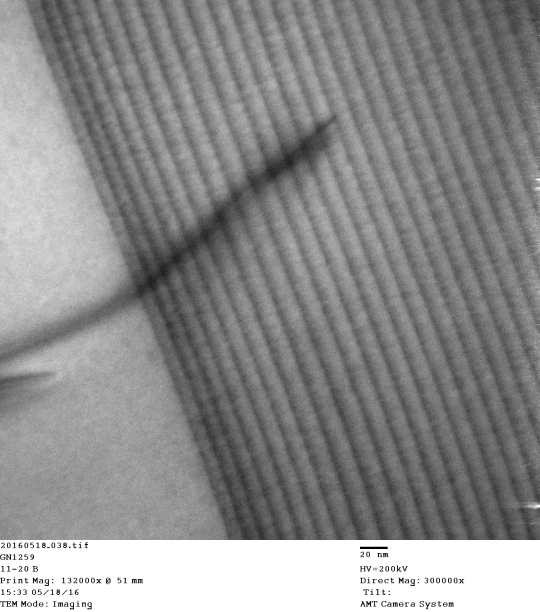
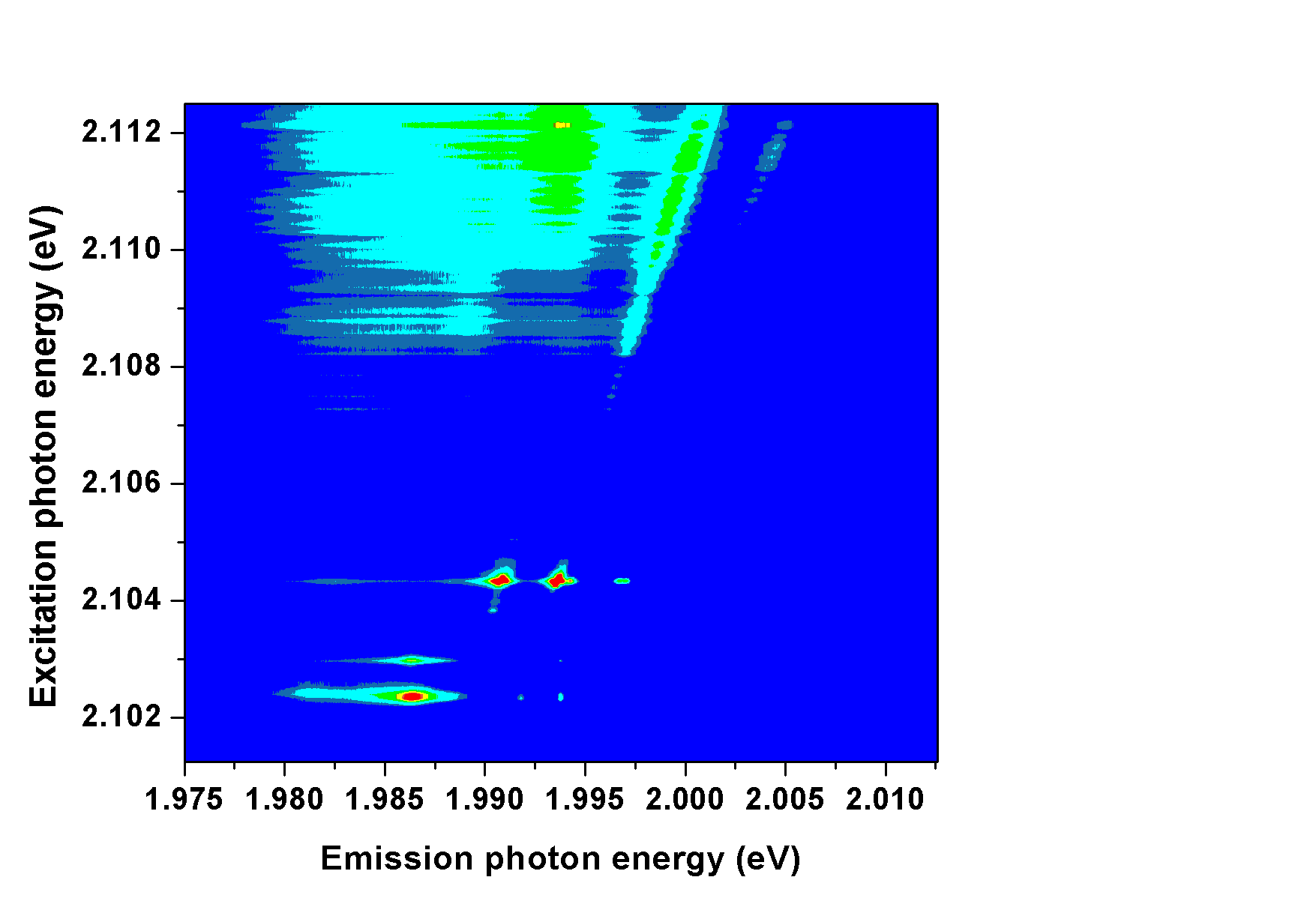
From left to right: photography of a GaN:Eu based red LED, Photoluminescence of AlGaN:Tm film, at 10K and room temperature, AFM of a GaN:Eu film, TEM of a multilayer GaN/GaN:Eu, combined excitation emission spectroscopy of a GaN:Eu film, where photoluminescence is measured for different excitation energies.
Similarly to semiconductor based LED, semiconductor based laser possess several advantages over its conterparts (for instance dye laser), as it can be miniaturized (portable), is stable with temperature and is more energy-efficient.
Our laboratory is working on a laser based on a GaAs host combined with the rare earth Erbium (Er), as a dopant. The output light is around 1.5 micrometer, which is widely used in telecommunications. Unfortunately, GaAs:Er films do not possess the required output power intended for lasing.
This is why our research leads to the coupling of Er photoluminescence emission with a cavity resonant wavelength. It is obtained by using a photonic crystal in which a nanocavity is introduced. A photonic crystal is a periodic structure composed of two dielectrics with contrasting refractive index (here GaAs and air). It is a phenomenon observed commonly in nature, of which the most famous exemple is the mineral opal. After working on a L3 type cavity, new and pending research focus on the H0 cavity.
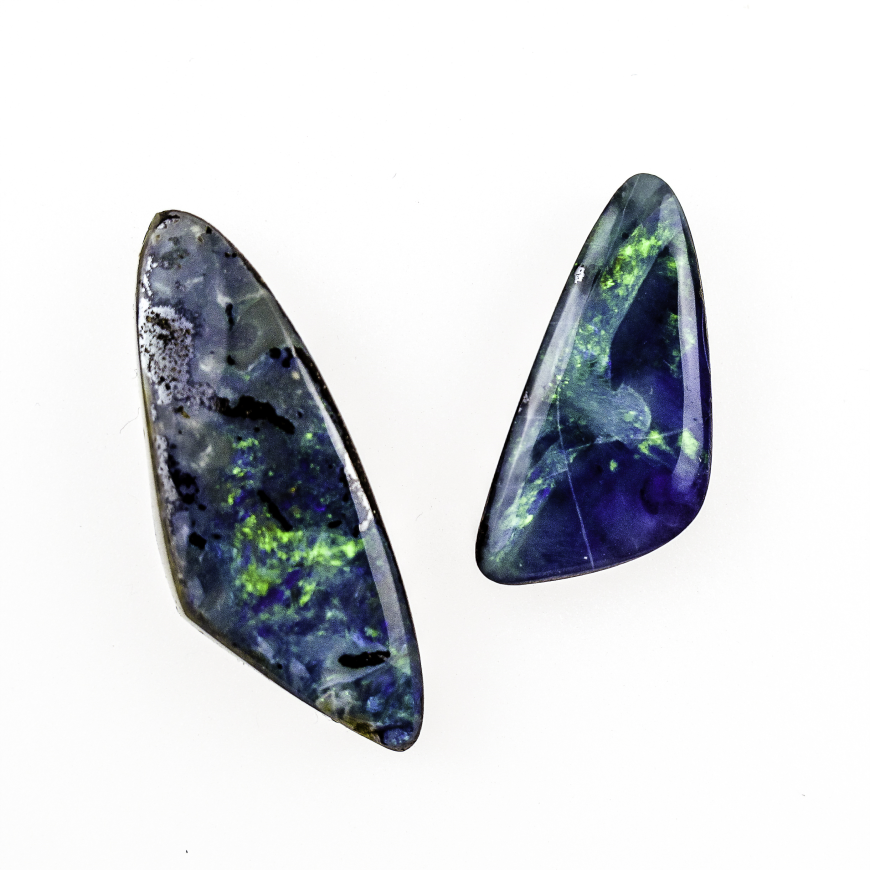
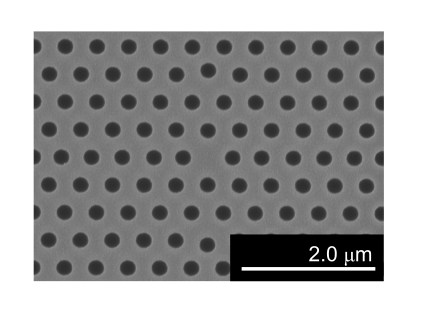
From left to right: photography of opals, Scanning Electron Microscopy image of a H0 GaAs:Er photonic crystal nanocavity
Due to the environmental problems linked to energy production, it is of ultmost importance to produce renewable energy (for instance using solar energy) and to reduce energy consumption of electronics (as for semiconductor based LEDs).
In our laboratory, we focus on both approaches. First, by researching a solar convertor for Silicon based solar cell, by absorbing higher energy photons and converting it to lower energy photons, which can be, in turn, absorbed by the solar cell. This is obtained by combining a Zinc Oxide (ZnO) host annowires with rare earth Thulium (Tm) and Ytterbium (Yb). Second, we investigate the effect of Silver (Ag) nanoparticles on the photoluminescence of GaN:Eu films, using the plasmonic effect. Third, the output power of the red LED GaN:Eu is enhanced by using cavities and distributed Bragg reflectors.